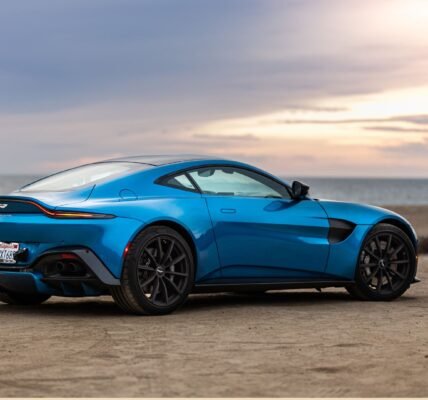The electric vehicle (EV) revolution is speeding up. With more countries pushing for greener transportation, the next wave of electric vehicles is set to reshape the future. From faster charging times to longer ranges, EVs are evolving at an incredible pace. In this blog, we explore the latest trends and innovations driving the next wave of electric vehicles in 2024.
Expanding Electric Vehicle Adoption
The demand for electric vehicles continues to grow. Consumers are becoming more eco-conscious, and governments are pushing for lower emissions. In response, automakers are producing more electric models than ever before. The next wave of electric vehicles includes both luxury cars and affordable models, making EVs more accessible to a broader audience.
Companies like Tesla, Nissan, and Ford are introducing electric vehicles across a variety of price points. This growing variety is making it easier for people to switch from traditional gas-powered cars to electric ones. With more options, the upcoming one is of electric vehicles is set to meet the needs of different types of drivers, from city commuters to long-distance travelers.
Improved Battery Technology
One of the most critical areas in the next wave of electric vehicles is battery technology. Early EVs were limited by their short driving ranges, but recent advancements are pushing those limits. The new generation of batteries is lighter, more efficient, and capable of delivering longer driving distances.
Lithium-ion batteries, which power most EVs today, are getting better with each year. Manufacturers are also exploring alternative materials, like solid-state batteries, that promise even better performance. These new battery technologies are crucial to the next wave of electric vehicles, offering longer driving ranges and faster charging times, making cars even more practical for everyday use.
Faster Charging Infrastructure
The charging infrastructure for EVs is also rapidly improving. In the past, the lack of charging stations was a major concern for potential EV owners. However, the next wave of electric vehicles is bringing faster and more convenient charging solutions.
Ultra-fast chargers, like those developed by Tesla and other companies, are significantly reducing the time it takes to charge an EV. Instead of hours, drivers can now charge their cars in minutes. In addition to faster charging times, more charging stations are popping up in cities and along highways. This expanded network will make long-distance travel easier for EV owners, pushing the next wave of Green vehicle even further.
Autonomous Electric Vehicles
Autonomous driving technology is another game-changer for the next wave of Green vehicle Companies like Tesla and Waymo are already testing self-driving electric cars. These vehicles use a combination of sensors, cameras, and artificial intelligence to navigate roads without human input.
In the near future, fully autonomous electric vehicles could become a reality. This development will not only revolutionize the way we drive but also make EVs more efficient. With autonomous driving, EVs can optimize energy consumption, extend their range, and reduce traffic congestion. As part of the next wave of electric vehicles, self-driving technology is set to transform both the auto industry and the way we move.
Sustainability and Green Manufacturing
Sustainability is at the heart of the next wave of electric vehicles. Beyond reducing emissions, automakers are focusing on making the entire production process more eco-friendly. Many companies are using recycled materials and renewable energy sources in their manufacturing plants.
For example, Tesla’s Gigafactory is powered by renewable energy and is designed to produce zero waste. Other automakers are following suit, aiming to create greener factories and supply chains. These efforts ensure that the next wave of electric vehicles is not only better for the environment on the road but also throughout the entire production process.
Government Policies Driving the Change
Government regulations play a huge role in the next wave of electric vehicles. Many countries are setting ambitious goals to phase out internal combustion engines. Countries like the UK, France, and Germany have announced plans to ban the sale of new gasoline and diesel cars by 2035.
In the United States, states like California are leading the charge with incentives for EV buyers and stricter emissions standards. These policies are encouraging both consumers and automakers to embrace electric vehicles. With these regulations in place, the next wave of electric vehicles is poised to dominate the automotive market in the coming years.
New Players in the EV Market
While established car manufacturers are pushing the next wave of electric vehicles, several new players are entering the market. Companies like Rivian, Lucid Motors, and NIO are making a name for themselves by producing innovative electric cars.
These startups are focusing on unique features like off-road electric trucks, luxury EVs, and cutting-edge technology. Their fresh approach is adding diversity to the EV market, helping drive the next wave of electric vehicles with new ideas and bold designs.
Electric Vehicle Affordability
Another important factor in the next wave of electric vehicles is affordability. As technology advances, the cost of producing EVs is decreasing. This is making electric vehicles more affordable for a wider range of consumers.
For example, the new Tesla Model 3 and Nissan Leaf are both priced competitively with traditional gasoline-powered vehicles. As more affordable electric vehicles hit the market, more drivers will be able to make the switch to electric cars. This affordability is key to the growth of the next wave of electric vehicles.
Innovative EV Designs
The next wave of electric vehicles isn’t just about what’s under the hood—it’s also about design. Automakers are creating sleek, futuristic models that stand out from traditional vehicles. EVs are no longer limited to being practical and eco-friendly; they’re also stylish and fun to drive.
Companies are experimenting with new materials, shapes, and features to give their electric vehicles a unique edge. Whether it’s the aerodynamic design of the Tesla Cybertruck or the luxurious interior of the Lucid Air, the next wave of electric vehicles is setting new design standards for the future of cars.
Electric Vehicles in Motorsports
Electric vehicles are also making a splash in the world of motorsports. Formula E, the all-electric racing series, is gaining popularity as more automakers enter the competition. The next wave of electric vehicles is proving that EVs aren’t just for daily driving—they can also compete at the highest levels of performance.
Automakers like Porsche, Mercedes-Benz, and Nissan are using Formula E as a testing ground for new EV technology. The advancements made in electric motorsports often trickle down to consumer vehicles, pushing the boundaries of what electric cars can do.
Conclusion: The Future of Electric Vehicles
The next wave of electric vehicles is charging ahead, reshaping the future of transportation. With improved battery technology, faster charging infrastructure, and autonomous driving, electric vehicles are becoming more practical and accessible than ever before. As government policies push for greener alternatives, and new players enter the market, the next wave of electric vehicles promises a future where electric cars dominate the roads.




